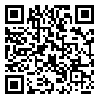BibTeX | RIS | EndNote | Medlars | ProCite | Reference Manager | RefWorks
Send citation to:
URL: http://payavard.tums.ac.ir/article-1-5157-en.html
Background and Aim: Recognition of expectations and perceptions of customers is essential for quality improvement . The aim of this study was to determine the quality gap of educational services in the viewpoints of Tehran University of Medical Sciences (TUMS) educational administrators, faculty members and medical students.
Materials and Methods: A cross-sectional study was carried out at TUMS in 2012 among educational administrators, faculty members and students of medicine. A total of 384 students, 384 faculty members and 83 administrators were selected randomly. The five-dimensional SERVQUAL questionnaire was applied for data collection. The educational services quality gap was determined based on the differences between administrators , faculty members and students΄ perceptions and expectations. Descriptive and analytic (one-way ANOVA) statistics were performed using SPSS v.18.
Results: The results show that there is a negative quality in all five dimensions of educational services quality. Among all three groups of students, faculty members and administrators, the maximum means of quality gap pertained the dimension of “responsiveness” (-1.42,-1.17,-1.09, respectively) the minimum figures, however, were related to “confidence” (-1.07,-0.87,-0.77, respectively).
Conclusion : In all aspects, students, faculty members and administrators’ expectations were higher than their perception of the current situation. To reduce the gap, it is recommended that attention be paid to all aspects of service quality, particularly to the responsiveness dimension. Also, better planning to serve employees and enhancing their communication skills are suggested as ways to reduce the educational services quality gap.
| Rights and permissions | |
 |
This work is licensed under a Creative Commons Attribution-NonCommercial 4.0 International License. |





